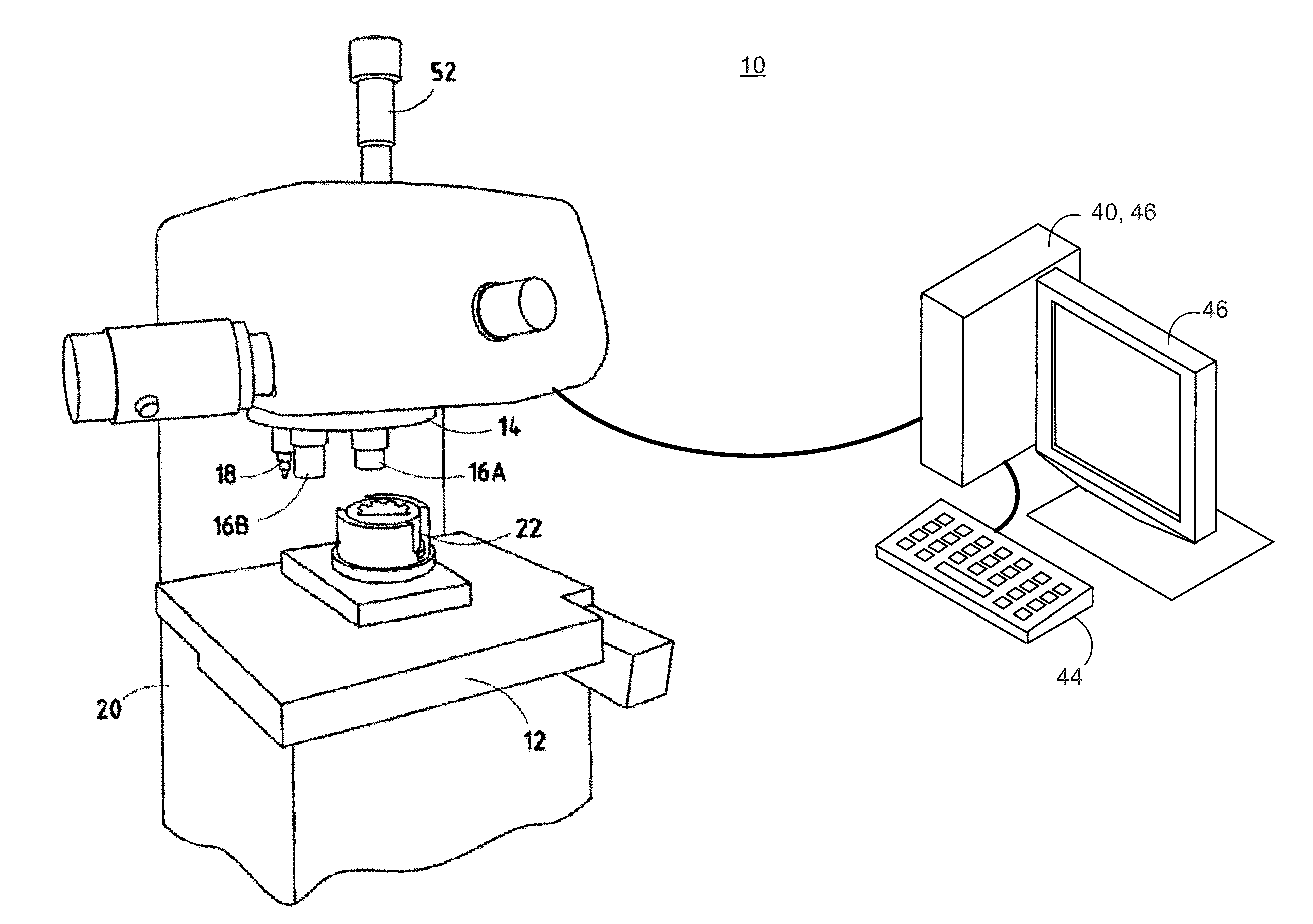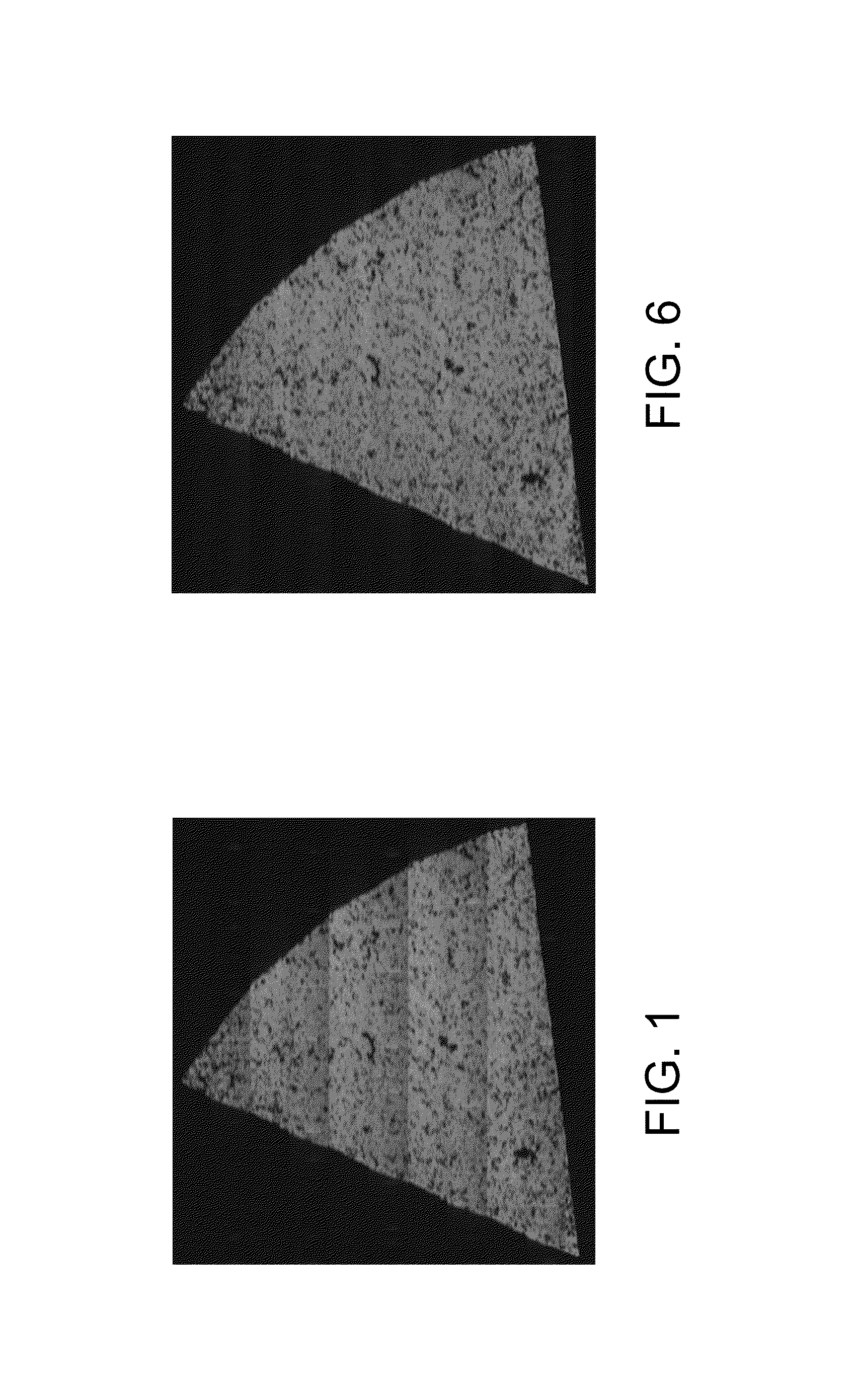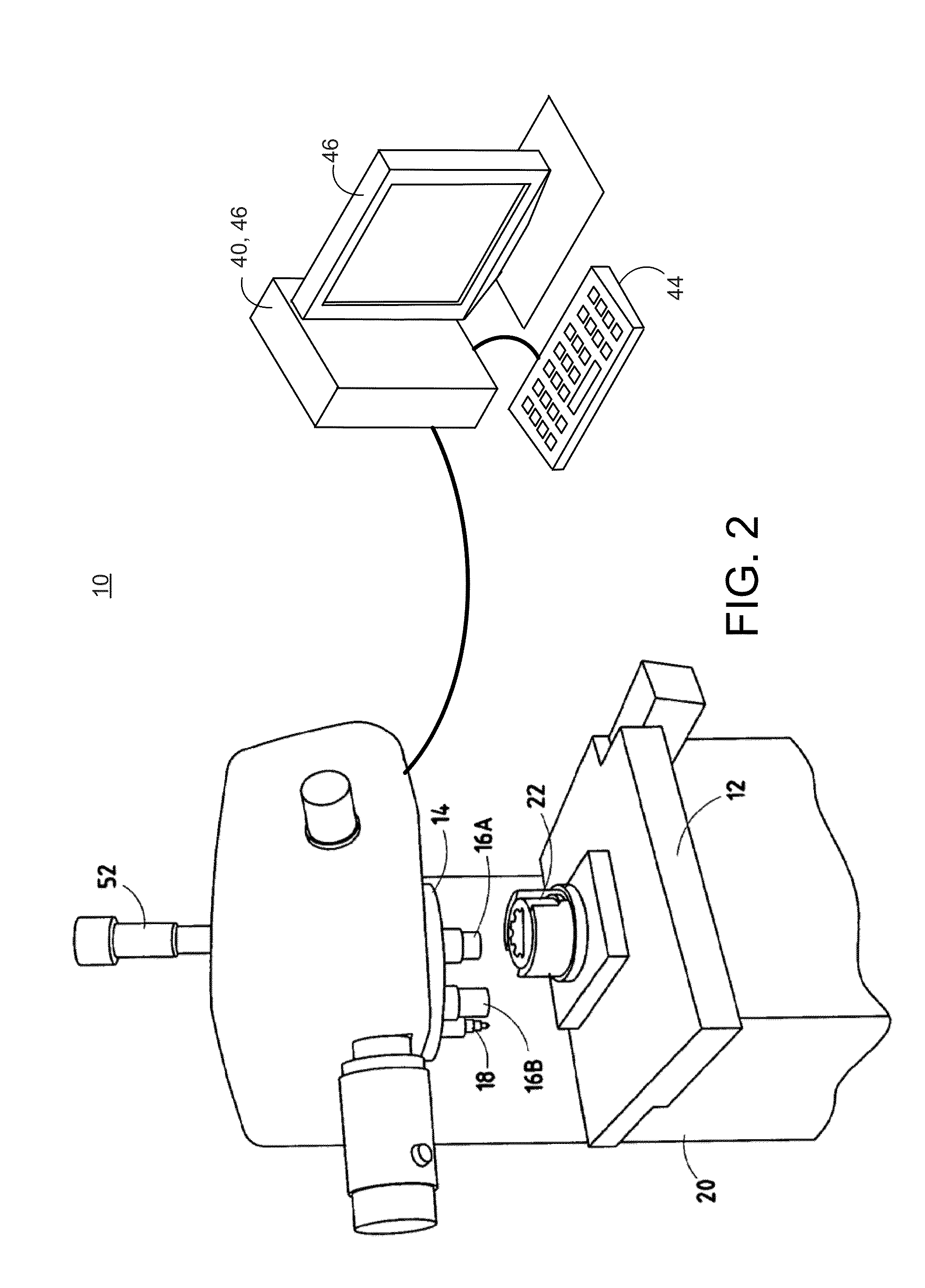Indentation hardness test system having an autolearning shading corrector
a test system and shading corrector technology, applied in the field of test systems, can solve problems such as stealing valuable time from operators
- Summary
- Abstract
- Description
- Claims
- Application Information
AI Technical Summary
Benefits of technology
Problems solved by technology
Method used
Image
Examples
Embodiment Construction
[0017]Reference will now be made in detail to the present preferred embodiments, examples of which are illustrated in the accompanying drawings. Wherever possible, the same reference numerals will be used throughout the drawings to refer to the same or like parts. In the drawings, the depicted structural elements are not to scale and certain components are enlarged relative to the other components for purposes of emphasis and understanding.
[0018]The embodiments described herein relate to an indentation hardness test system and a method for performing shading correction. An exemplary indentation hardness test system is first described with reference to FIGS. 2 and 3 followed by a description with reference to FIGS. 4 and 5 of a method of shading correction that may be performed by the indentation hardness test system.
[0019]A system according to the various embodiments described herein can be implemented using an indentation hardness test system that includes: a light microscope, a di...
PUM
 Login to View More
Login to View More Abstract
Description
Claims
Application Information
 Login to View More
Login to View More - R&D
- Intellectual Property
- Life Sciences
- Materials
- Tech Scout
- Unparalleled Data Quality
- Higher Quality Content
- 60% Fewer Hallucinations
Browse by: Latest US Patents, China's latest patents, Technical Efficacy Thesaurus, Application Domain, Technology Topic, Popular Technical Reports.
© 2025 PatSnap. All rights reserved.Legal|Privacy policy|Modern Slavery Act Transparency Statement|Sitemap|About US| Contact US: help@patsnap.com



